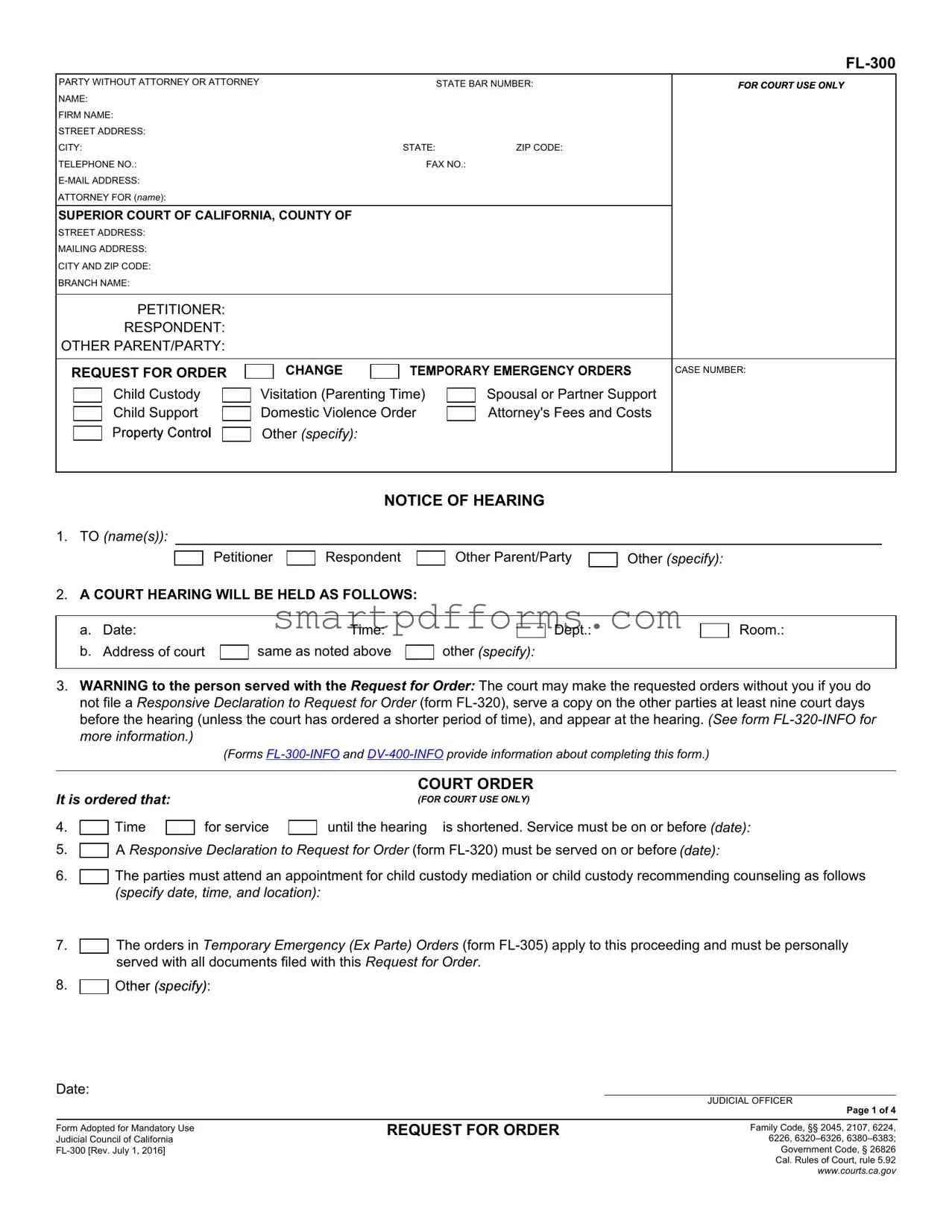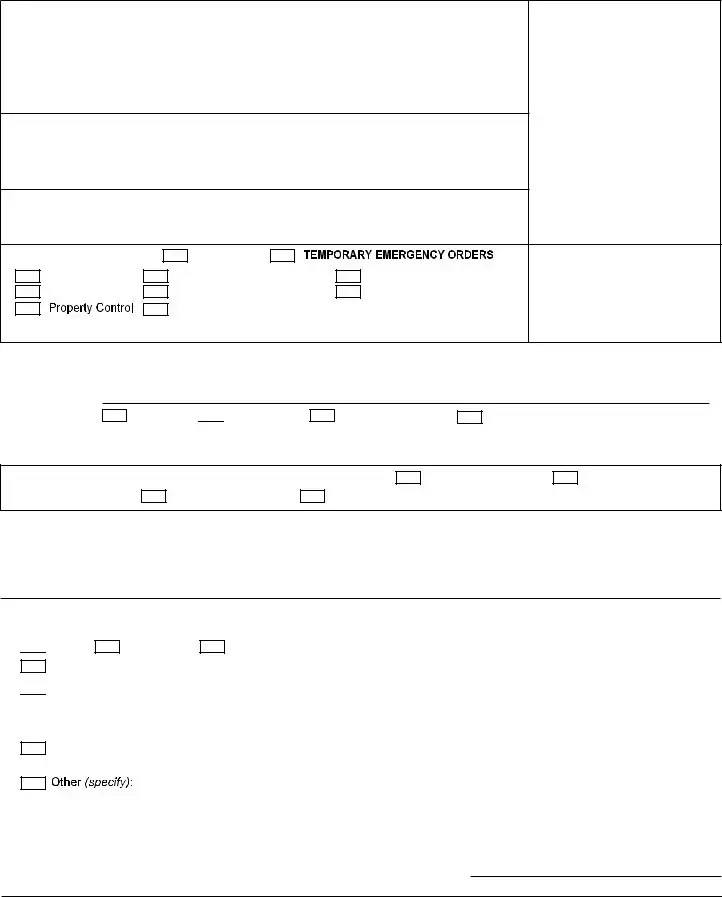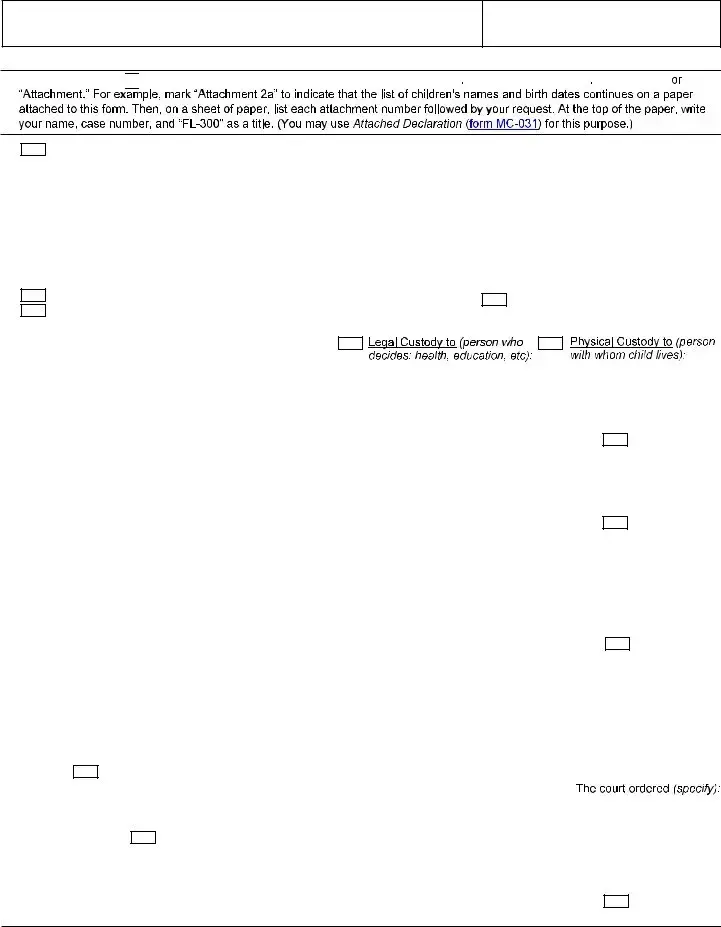Blank Fl 300 PDF Template
The FL-300 form is an essential document used in California's legal system, designed for individuals wishing to request court orders within family law matters such as child custody, visitation (parenting time), spousal or partner support, child support, and domestic violence orders among others. It serves as a formal plea to the court to consider and grant specific changes or implementations regarding these sensitive matters. Completing this form accurately and comprehensively can be pivotal in the court's understanding and eventual decision on the requested orders. Take the first step towards addressing your family law needs by clicking the button below to fill out the FL-300 form.
Make This Document Now



 Respondent
Respondent Time
Time The parties must attend an appointment for child custody mediation or child custody recommending counseling as follows (specify date, time, and location):
The parties must attend an appointment for child custody mediation or child custody recommending counseling as follows (specify date, time, and location):























































 petitioner
petitioner  respondent
respondent  other parent/party
other parent/party
 own or are buying
own or are buying I request temporary emergency orders be given exclusive temporary use, possession, and
I request temporary emergency orders be given exclusive temporary use, possession, and
 This is a change from the current order for property control filed on (date):
This is a change from the current order for property control filed on (date):